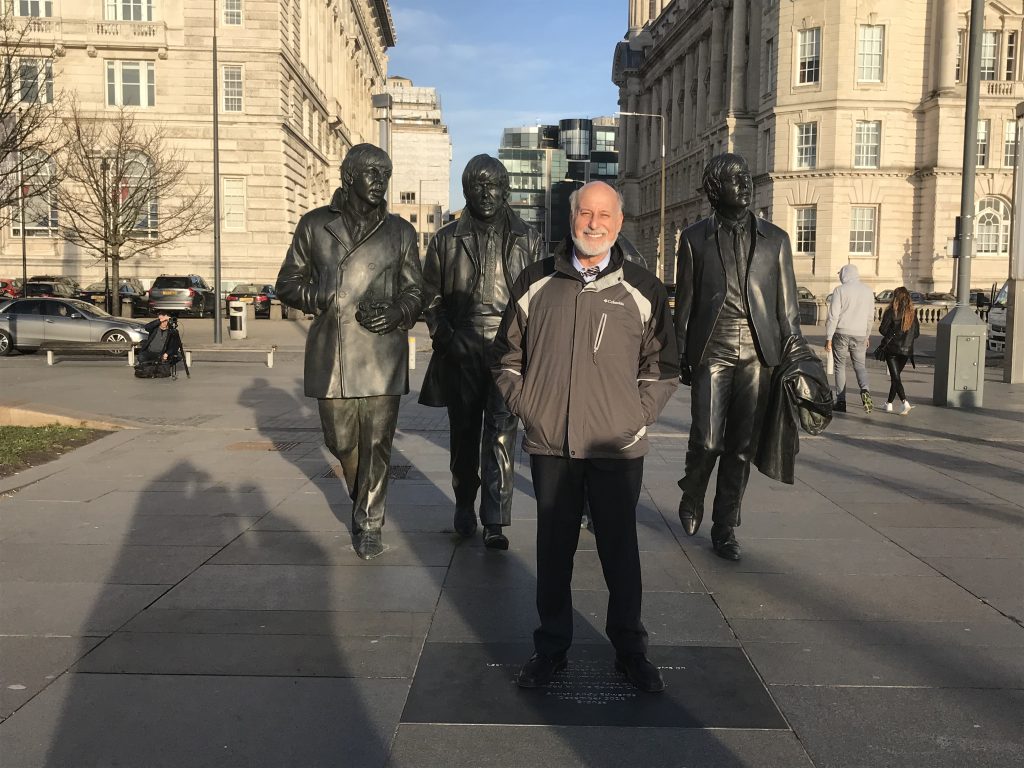2 Lessons from Liverpool
Liverpool was the last stop of my U.K. visit last week working with the British Institute of Mechanical Engineers (“IMechE”) to help them better plan for rising sea level. It was my first visit to the Liverpool, but I found it fascinating. Of course, the famous seaport city is widely recognized as the home of the Beatles and the RMS Titanic. As a dominant UK port city for centuries it has amazing architecture, lots of culture, and is undergoing a new period of growth.
Even though the visit was little more than 24 hours, we had three different events, a large lecture, a workshop, and a meeting with city officials.
Knowing my focus is to explain rising sea level and the need to design for the future, many of them proudly told me that they were “designing for climate change” which was good to hear. Yet as with most places that I visit, there were two points of confusion that warranted clarification:
First, efforts to reduce the greenhouse gases (“GHG”), such as renewable energy sources, are often thought of as a way to “address rising sea level.” Even if Liverpool got to “zero emissions” that would not have any direct effect on their sea level rise. Carbon dioxide and the other GHG, quickly blend globally in the atmosphere. It is vitally important that the world slows the warming, but that effort is the global total. So, the efforts of Liverpool to reduce the level of CO2 blend with Miami, Shanghai, Calcutta, etc. The point is that slowing the warming is essential but does not have a quick or localized effect. Also, due to the heat already stored in the oceans, sea level is guaranteed to rise to for many decades even if the entire world stopped all CO2 emissions tomorrow.
Although sea level rise is now unstoppable, we must slow the warming urgently. Reducing GHG emissions is key. The Liverpool area is big on offshore wind turbines and also has some interesting plans for tide powered energy, taking advantage of the huge daily tide swings. The River Mersey (made famous in the song Ferry Cross the Mersey (by Gerry and the Pacemakers – 1965) rather dominates the area. I was amazed to learn that the daily tidal range is up to 9.8 meters (32 feet) — the second highest in the northern hemisphere.
Second, is the problem of confusing sea level rise with short-duration flooding such as storms or extreme tides. Rising sea level is slow and permanent, but elevates the water level from all those transient flood events. Recent unusual weather patterns of heavy rainfall and storms are already requiring new structure ideas and civil engineering to reduce flooding from short duration events. Where we are planning durable buildings and infrastructure we need to think bigger. The latest projections show that we could have two feet of higher sea level as early as mid-century, with at least double that later in the century. To plan for rising sea level we need to think bigger. Though a new challenge, it’s an opportunity for innovative long term design, engineering, and planning. For example, there has even been some talk of creating a dam or lock on the Mersey to keep sea level at bay. Time will tell if that is deemed feasible from an engineering and economics standpoint.
Of course, this challenge is not limited to Liverpool or even the U.K. The awareness, engineering, and challenge to adapt apply to all coastal communities, thousands globally. This week of talks and workshops in England was just a good opportunity to help a broad group of interested parties understand and plan better for the future. Looking ahead can allow a community to be a future leader.
All the marvels that mankind has ever built began as an idea. Vision, leadership, engineering, and construction turn some ideas into reality.


